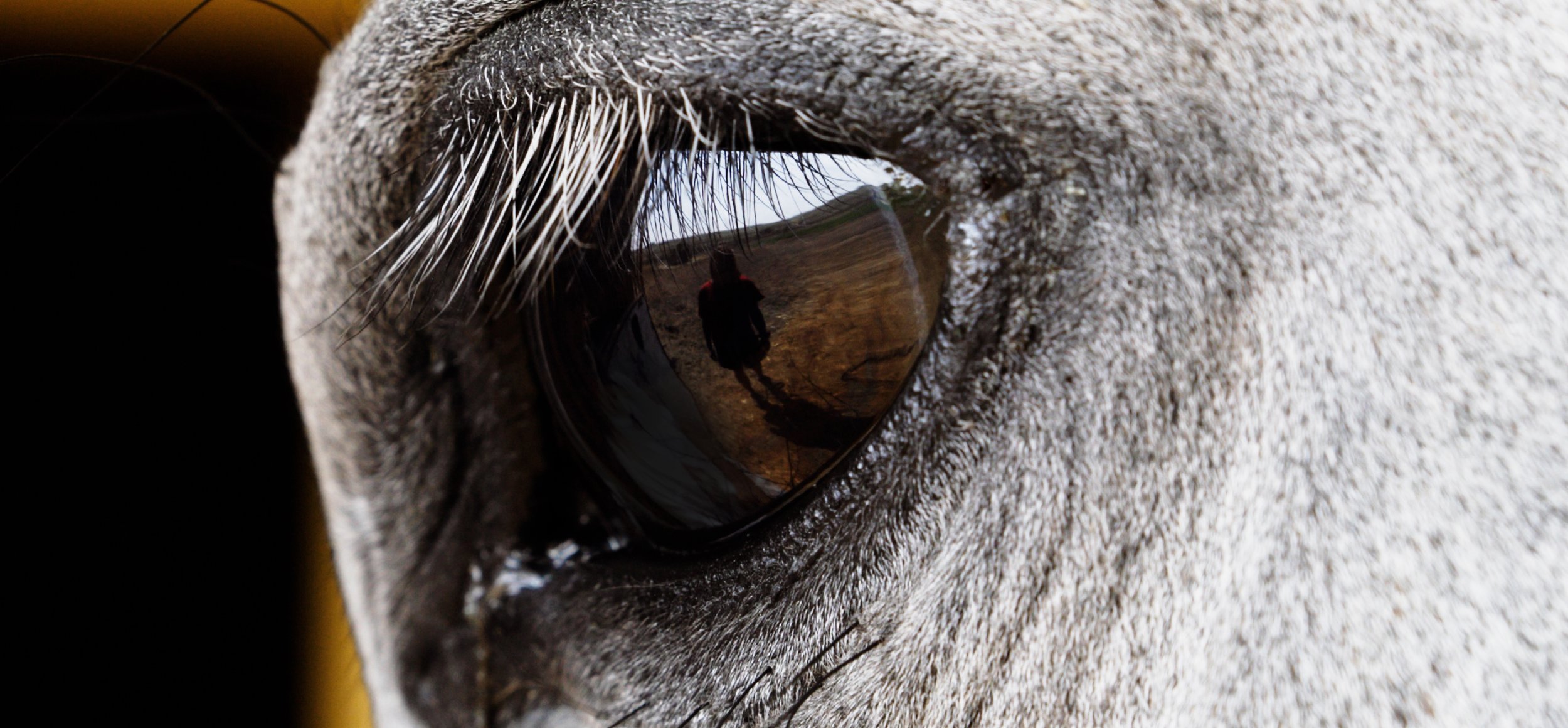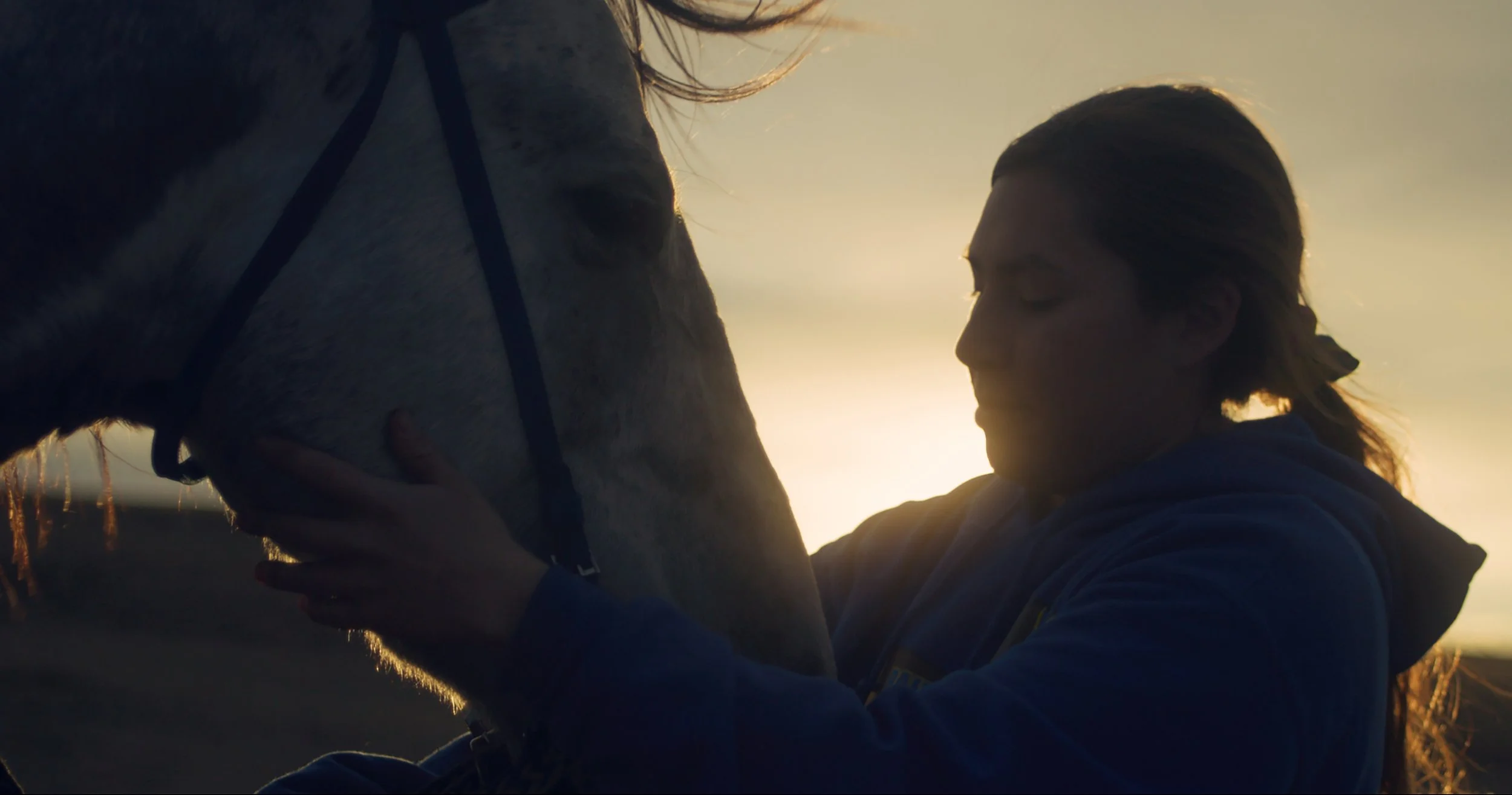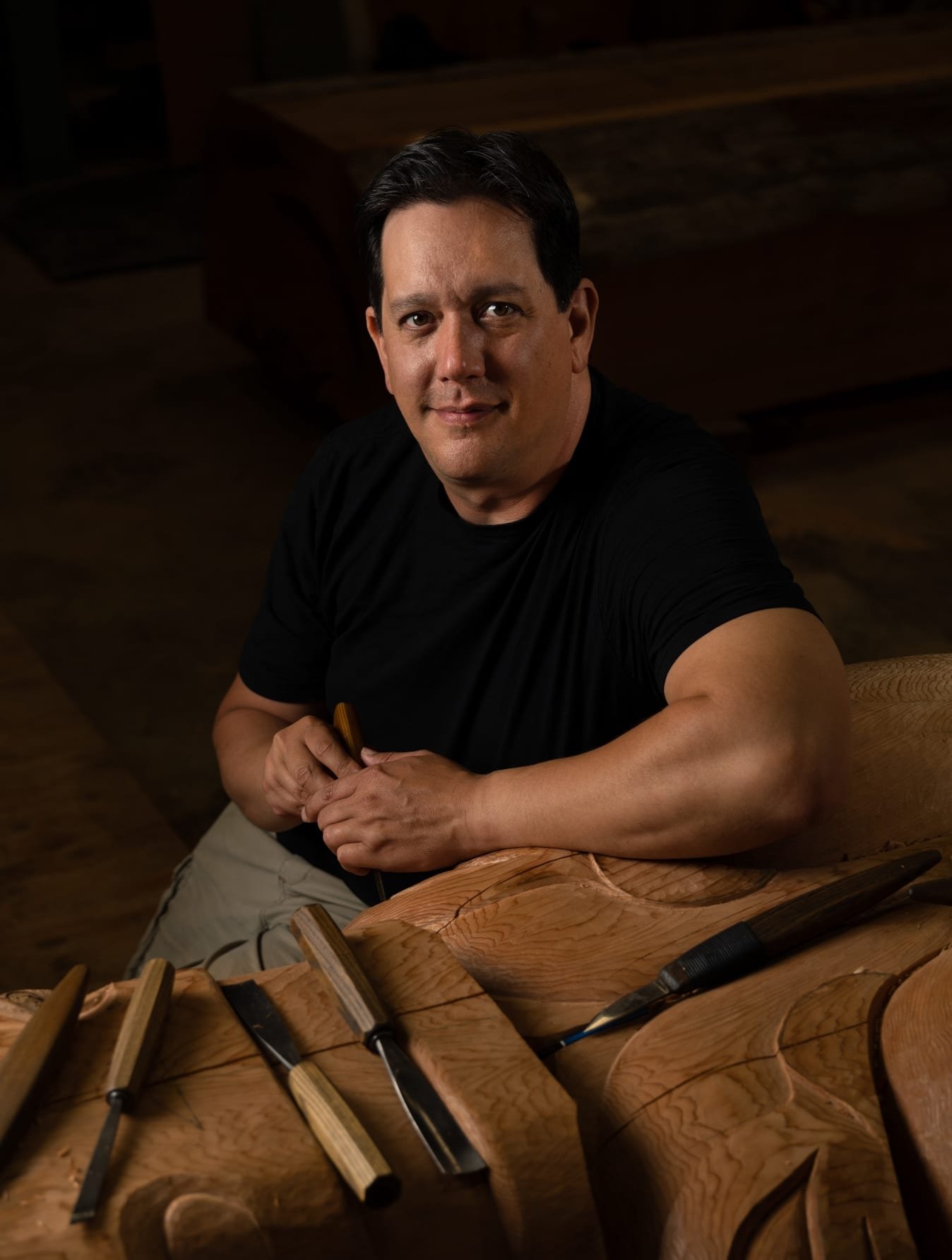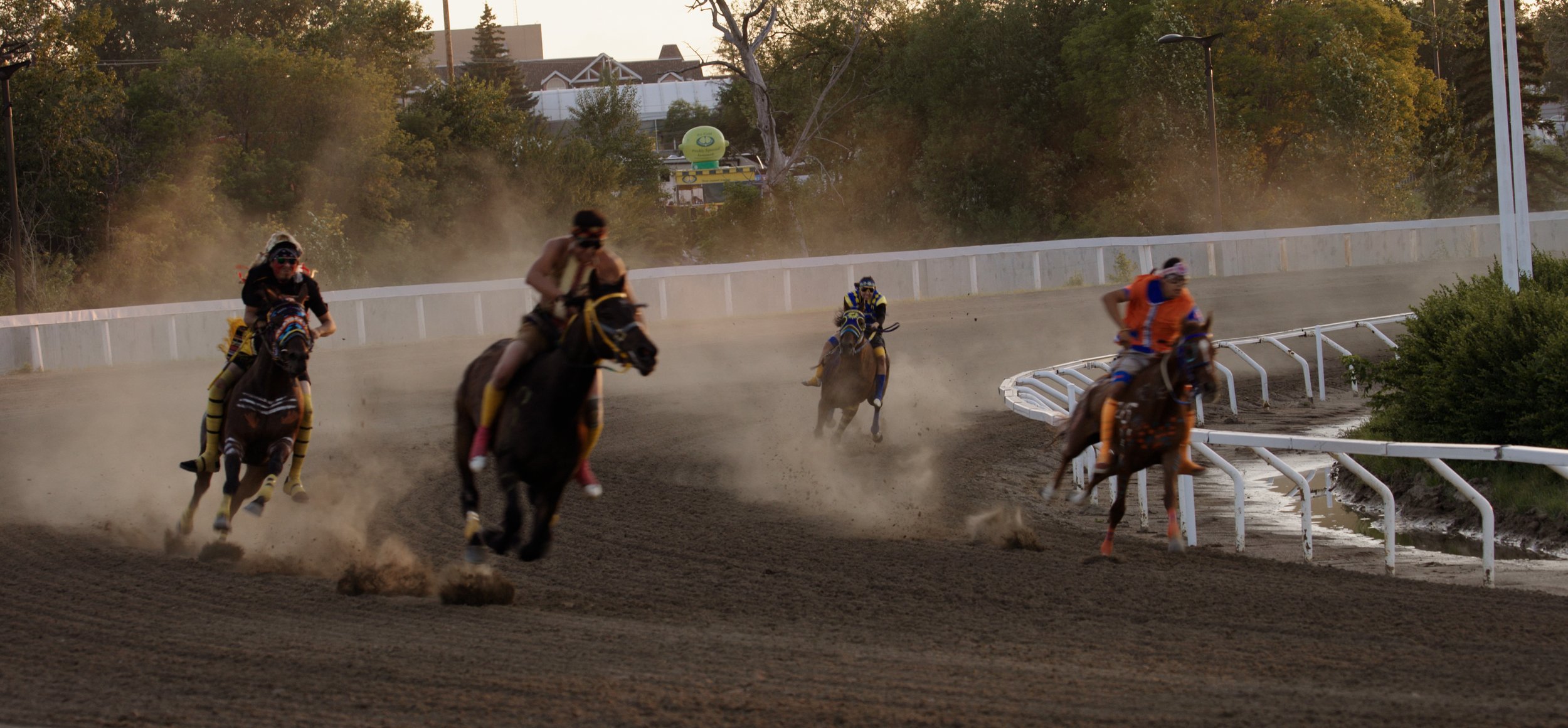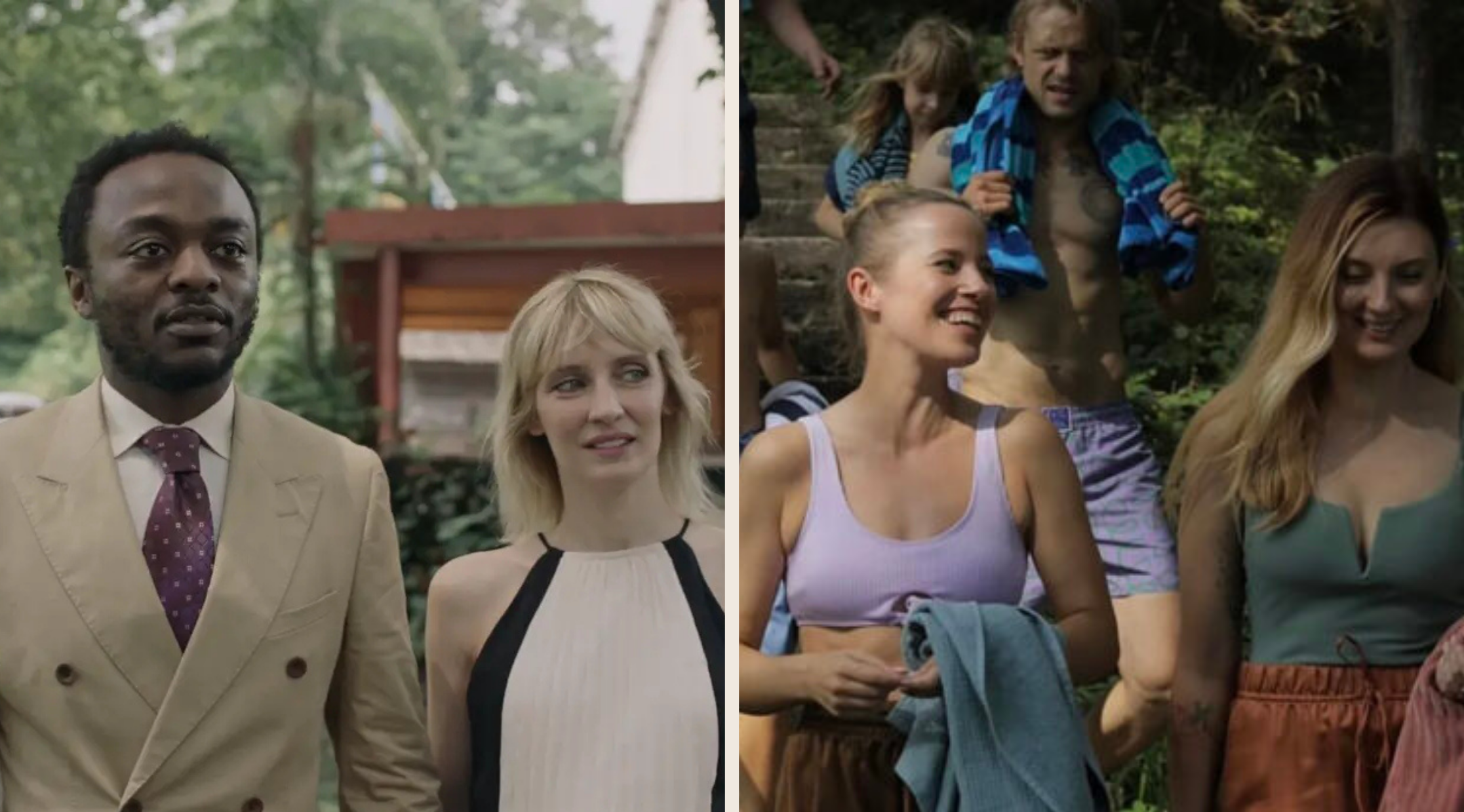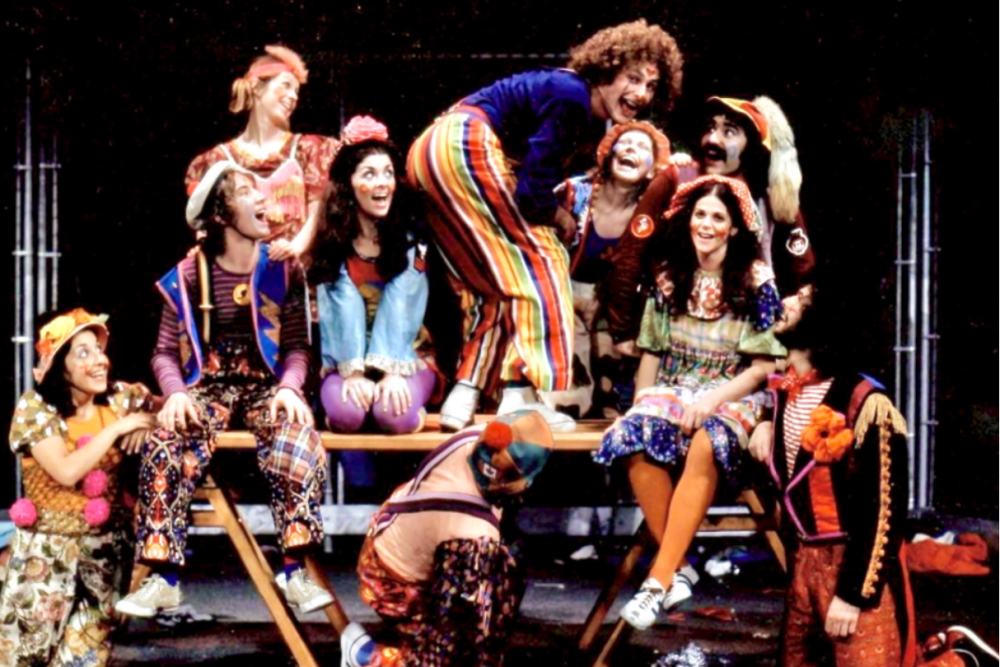At VIFF, Logan Red Crow shows ups and downs of bareback horse relay racing in Aitamaako'tamisskapi Natosi: Before the Sun
Documentary follows young Siksika woman’s journey as she competes in the dangerous male-dominated sport with the love and support of her family
Logan Red Crow reflected in her horse Sally’s eye in Aitamaako'tamisskapi Natosi: Before the Sun.
VIFF screens Aitamaako'tamisskapi Natosi: Before the Sun at International Village on October 5 at 4 pm and October 7 at 6:15 pm, with a relaxed screening on October 8 at the Studio Theatre at 4:15 pm
SPRAWLING PANORAMA SHOTS of Alberta’s golden Blackfoot Territory plains, hooves kicking up sun-tinged puffs of dirt, and gleaming reflections in a horse’s pensive eye are scenes that create the aura of serenity felt throughout Aitamaako’tamisskapi Natosi: Before the Sun.
The documentary directed by Banchi Hanuse, which earned the award for Best Film About the American West at the Big Sky Documentary Film Festival earlier this year, follows young Siksika woman Logan Red Crow on her journey as a bareback horseback rider.
In one scene, Red Crow is about to race in the men’s Indian Relay at the Calgary Stampede on her grandmother’s birthday. She slips into a pair of pristinely kept white moccasins that belonged to her. It’s a moment of generational connection, and a meaningful tie to a family member that played an important role in Red Crow’s life.
“My late gram Emily, she pretty much raised me,” says Red Crow. “My mom and dad never really sent me to daycare or anything ’til I got sent to kindergarten, so my grandmas were the ones that raised me. I’m pretty much always at my grandparents’ houses, every day. They were just always there when I was growing up. They’re good support.”
Aitamaako’tamisskapi Natosi: Before the Sun was filmed across the land of the Siksika Nation; Tsuut’ina, Îyâxe Nakoda, Blackfoot Territory; Enoch Cree Nation ᒪᐢᑫᑯᓯᐦᐠ Maskêkosihk; and Casper, Wyoming. The documentary cultivates themes of close-knit family, female empowerment, and passionate commitment through a soothing cinematic lens—all while Red Crow trains to compete in Indian Relay, a dangerous race form which involves jumping from horse to horse between laps around a track. The anticipation is palpable as she practices day after day with her brother Racey and dad Allison, who runs the Old Sun Indian Relay racing team.
Logan Red Crow with her horse Sally in Aitamaako'tamisskapi Natosi: Before the Sun.
Red Crow’s deep-rooted respect for the majestic horses she cares for shines bright in the film. Each day, she runs 10 kilometres to give back to the horses. She speaks to the stoic animals often, offering them quiet words of companionship.
It’s a trait that flows through her family lineage. Red Crow’s dad first taught her how to ride, and his parents were the ones who got the family their horses. As it turns out, Red Crow’s late grandmother was an avid rider herself.
“I actually didn’t even know that she raced or anything,” says Red Crow. “I kind of just fell in love with the sport on my own, and fell in love with the speed on my own. But to hear that, I guess you could say that racing is in my blood. So that’s pretty cool.”
Bareback horseback riding is a male-dominated sport. In Canada, options are slim for female relay racers—just this year, the Calgary Stampede introduced their first-ever ladies relay. Before then, Red Crow’s only local option was in Lethbridge, Alberta, where she’s allowed to compete in the men’s relay. Red Crow often travels long hours with her family to Montana and Idaho so she can race.
Carey Newman, executive producer for the documentary alongside Izzy Pullen, says that centring a female Indigenous voice was an important aspect of the project for him.
“It’s an incredibly compelling sport,” says Newman. “It’s thrilling. You just have to watch a little bit of it, and you get immediately engaged and excited. But for me on a deeper level, I was drawn to the strength of Logan as a person, and the love that we can see, or feel, or hear in the conversations with her and the family, and seeing them interact with the horses. I have a 13-year-old daughter, and I don’t think that there’s nearly enough stories about strong, young Indigenous women.”
Executive producer Carey Newman.
Newman is a Kwakwa̱ka̱’wakw-Coast Salish master carver, artist, and filmmaker whose works include the 20 foot-tall Cowichan 2008 Spirit Pole, and a major stainless steel-cedar-glass panel commission for the 2010 Olympic Games entitled Dancing Wind.
In 2019, Newman directed and produced a documentary called Picking Up the Pieces: The Making of the Witness Blanket, which chronicles the fabrication of his artwork that incorporates 800 objects collected from residential schools, churches, and government buildings into a massive wooden fixture that resembles a woven blanket. Today, the project is on display at the Canadian Museum for Human Rights. That first documentary experience prompted him to pursue storytelling through film further, which led to Aitamaako’tamisskapi Natosi: Before the Sun.
“We see a lot of films that are about Indigenous people, families, and lives, that focus on trauma,” says Newman. “And I think that with this film, you know that colonialism exists, you know that grandparents went to residential schools—but that’s not the focus of it. The focus is the strength and resilience. The focus is the love.
“And as an Indigenous person who has grown up in communities that are filled with trauma, you’re tired of seeing that be the only story that’s told,” says Newman. “So that’s what I hope people see … a positive story about Logan and her family, and all that she accomplishes, and all the ways that they support her.”
Red Crow races against men in the Indian Relay at the Calgary Stampede in Aitamaako'tamisskapi Natosi: Before the Sun.
As Red Crow races around the track on her thoroughbred Sally, who stands fifteen hands (around five feet) tall, she reaches speeds of up to 70 kilometers per hour. The wind whips through Red Crow’s hair as she buckles down, bracing against the speed.
“I ride a bike and when I get going 60 to 65, I get scared,” chuckles Newman. “And I can just pull the brakes and slow down. I don’t have to negotiate with an animal who’s running.”
But where others might falter in the face of that risk, Red Crow thrives. “After you get the first race out of the way, then you’re good,” she says.
As for Red Crow’s favourite part of riding? “The speed,” she laughs. “It’s fun to go fast.”


